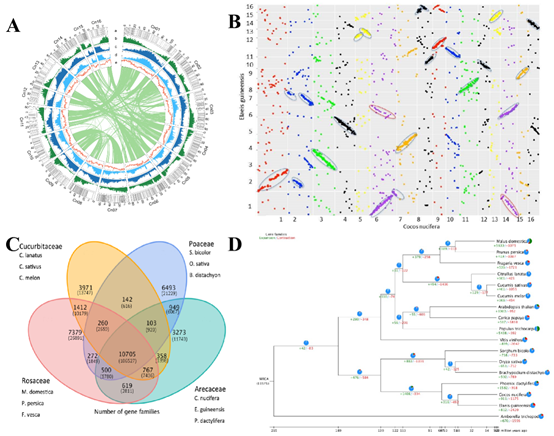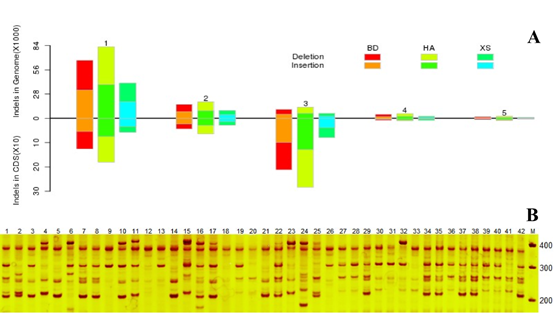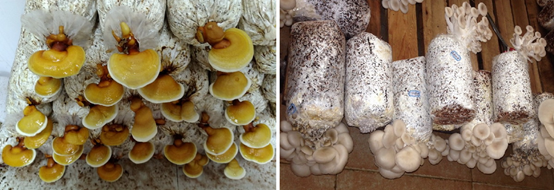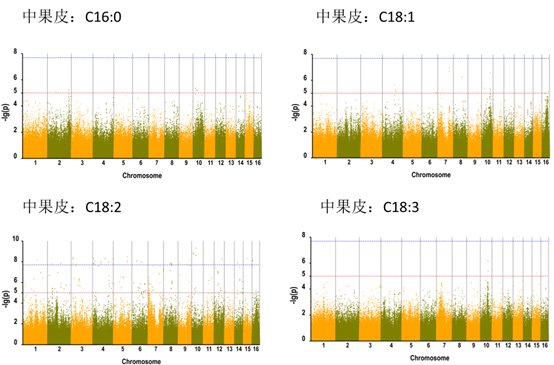Biotechnology Research Department uses biotechnology to research the molecular mechanism of oil palm and coconut low-temperature reaction and adaptation and the regulation mechanism of oil synthesis metabolism. It also carries out analysis and linkage analysis of important agronomic traits of tropical oil crops, and develops characteristic molecular markers for oil palm, coconut etc. All these researches provide theoretical basis and technical solutions for the creation of tropical oil high-yield and stress-resistant germplasm resources. It has undertaken more than 30 scientific research projects at or above the provincial and ministerial level, including 4 national funds, published more than 50 high-level papers, including 25 papers in SCI, 1 the third prize of Hainan Science and Technology Progress Award, and 3 national invention patents which contained 1 foreign patent 3 monographs.
Technology Department
Biotechnology Research Department
Biotechnology Research Department is mainly engaged in the analysis and linkage analysis of important agronomic traits of tropical oil crops such as coconut, areca and oil palm and other tropical palm plants, and the basic and applied basic research on the development of characteristic molecular markers. There are 6 scientific and technical personnel, including 2 senior titles and 2 doctors.
Research platform
Hainan Key Laboratory of Tropical Oil Crops Biology
Research Achievements
1. Coconut whole genome sequencing and functional gene mining and application
The Biotechnology Research Department completed the whole genome sequencing of cultivar Hainan Tall Coconut and carried out functional gene mining and application research. This provided technical support for the innovation of coconut germplasm and the leap-forward development of breeding business.

Whole genome sequencing and analysis of cultivar Hainan Tall Coconut
A. Coconut genome characteristics; B. Comparison of the genome of coconut and oil palm; C. Comparison of gene families; D. Gene family expansion and contraction.

Development and application of coconut molecular markers
A. InDel label distribution of perfume coconut and yellow dwarf coconut; B. DNA molecular marker evaluation of coconut germplasm resources.
2. Rapid identification of the purity of perfumed coconut seedlings
Through DNA identification technology, the true and false perfume coconut seedlings can be quickly identified at the seedling stage of coconut, and the identification accuracy rate is over 98%. The technology can guarantee the purity of the coconut seedlings of the scented perfume and protect the interests of the coconut farmers. The promotion has great practical significance. The technology has won the national invention patent, patent number is ZL201410657128.5.

Perfume coconut seedling DNA identification technology map
3. Coconut waste utilization and cultivation of edible fungi
Biotechnology Research Department Carries out research about experimental cultivation techniques of edible fungi based on coconut litter as the main base and forms a coconut plant ecological recycling model of “coconut waste--edible fungus-- earthworm-- coconut forest”. This mode has laid a good foundation for comprehensive utilization of
coconut waste.

Coconut litter processing technology

Ganoderma lucidum and Pleurotus ostreatus cultivation technology
4. Genome-wide association analysis of oil palm oil related genes
Oil palm is a typical perennial woody crop with a long life cycle. This feature makes the conventional breeding of oil palm slow. But using genome-wide association analysis to mine molecular markers closely linked to important agronomic traits of oil palm can provide a theoretical basis for the molecular breeding of new varieties.

Genome-wide association analysis of major fatty acid components in Oil Palm
